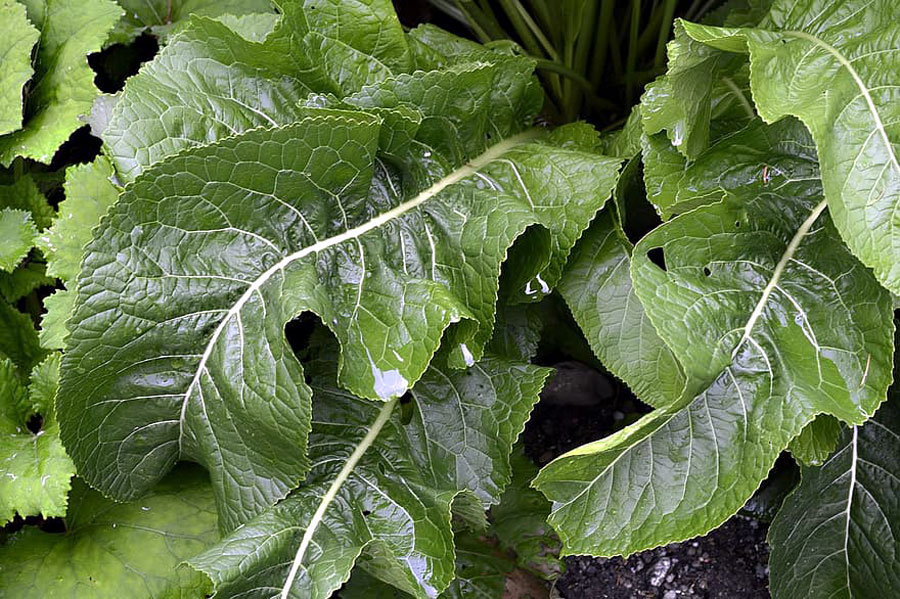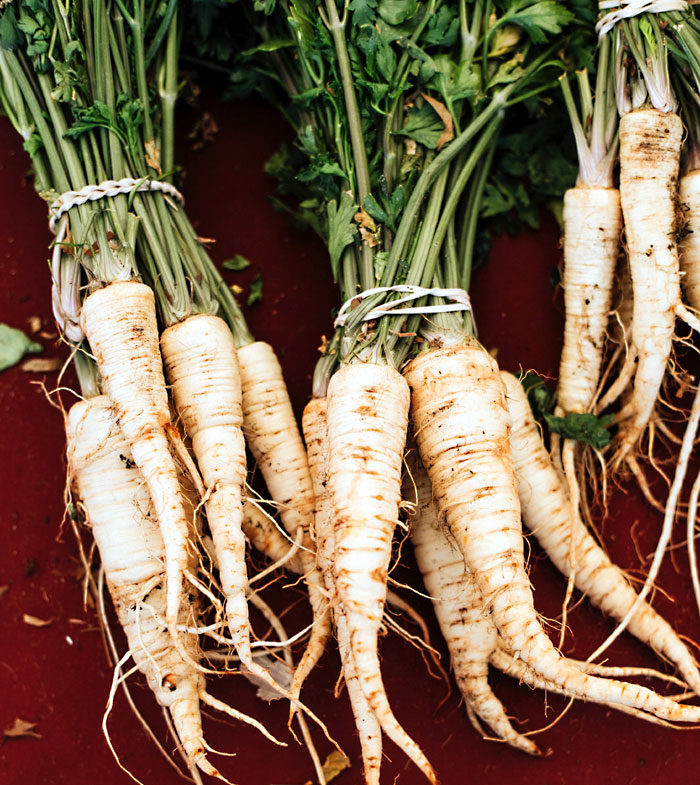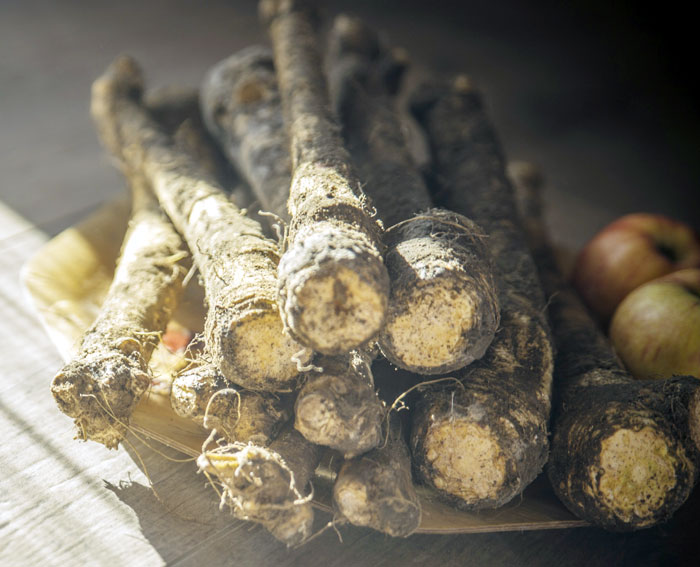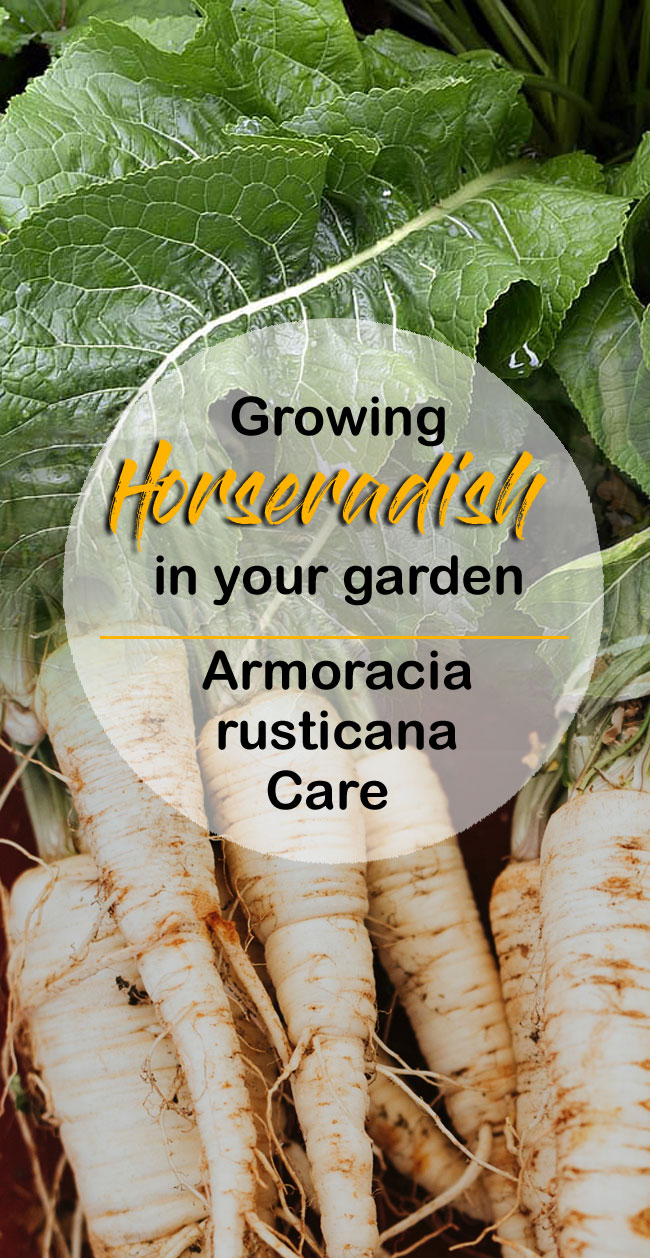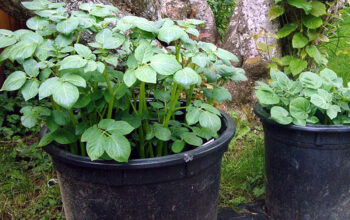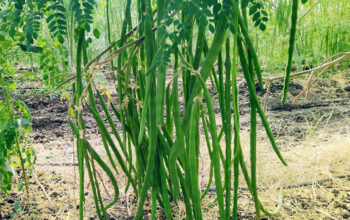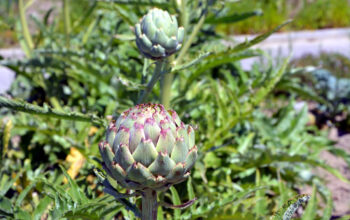Horseradish Plant (Armoracia rusticana)
Horseradish (armoracia rusticana ) is a perennial member of the Brassicaceae (along with mustard, wasabi, broccoli, cabbage, and radish). This root vegetable is known as pepper root, red cole, its pungent flavor, and odor are popular. These plants are probably native to the southeastern regions of Europe and Asia. Over the years, it has been used, as both a condiment and medicine around the world. Several compounds in this root provide health benefits, including antibacterial and anticancer properties. Dark green leaves with long, shiny teeth are found on the plant, and tiny, four-petaled white flowers bloom on panicles during the summer. Growing horseradish in your garden or container is very easy, For more details read our full post.
Grated or crushed horseradish flesh can be used to make a sauce or as a spice. Its root can be used in place of real wasabi on account of its pungent taste. Horseradish sauce is a condiment made from grated horseradish and vinegar, famous in the UK and Poland. Occasionally, it is mixed with sour cream to relieve the heat. In addition to using it on sandwiches and salads, this sauce can be served with roast beef.
Overview Horseradish Plant
Scientific Name Armoracia rusticana
Common Name Horseradish, red cole, pepper root
Plant Type Vegetable
Sun Requirements Full sun
Soil well-drained, rich soils
Soil pH 5.5 to 6.0
Blooming time Summer
Zone 3-8
How to Grow and Care Horseradish Plant
Horseradish is typically planted in the spring and will grow so quickly that the roots can be harvested in the fall. When growing horseradish in containers, you should plant them in an outdoor garden at the beginning of the growing season, just before the plant starts growing. Once the growing season ends, you can replant them once the horseradish roots are harvested.
Growing from roots
Planting red cole usually begins with small root segments called “sets”. As soon as the soil thaws, plant them early in the spring. A long growing season is essential to the roots. Growing horseradish in containers is the most effective method since it spreads readily and can easily become out of control. Remove stones and other lumps from the soil at a depth of 10 to 12 inches to prevent the roots from splitting. The pieces of the root should be planted roughly 3 inches deep at a 45-degree angle. Space them roughly 18 inches apart. No support structure should be required. Once planted, the plant can be harvested between 140 and 160 days after planting.
Growing from cuttings
These plants are propagated most commonly by cuttings from roots. When digging them up, choose at least 8-inch long side roots from the root harvest. Plant the ends that point down when they are cut straight across the top and angled at the bottom. Allow the cuttings to dry completely before planting. Make sure they aren’t exposed to light by storing them in moist sand or sawdust in a cool root cellar. Transplant them once the soil has warmed up in the spring.
Sunlight
Full sun is ideal for growing horseradish. While Horseradish plants can tolerate some shade, they will not produce the same amount. Ideally, they should be exposed to direct sunlight for at least six hours daily.
Soil
It is best for roots to grow in loose, well-draining soil with lots of organic matter. A pH level of 5.5 to 6.8 is ideal for horseradish. Horseradish also likes a slightly acidic to neutral soil pH.
Watering
The water requirements of horseradish are moderate. The plant is drought-tolerant. Watering too little can result in woody roots and weak flavors. Watering too much can cause the roots to become very soft and have an unpleasant taste. An ideal amount of water is between 1 and 2 inches every week.
Temperature
Red cole prefers a cool climate. It grows well at temperatures ranging from 45 to 75 degrees Fahrenheit, but its ideal temperature is between 60 and 65 degrees Fahrenheit.
Fertilizer
Make sure to use a high-phosphorus, low-nitrogen fertilizer in spring to encourage larger, healthier roots. Compost or compost tea can be used in conjunction with a commercial 10-10-10 vegetable fertilizer (following the instructions on the packet).
Pruning
When a pepper root plant starts to grow, it will shoot off multiple stems. Small roots form on each of the stems, and the plant uses the energy from them. Horseradish does not need to be pruned very often. In essence, it is done to prevent the suckers from inhibiting the growth of the main shoots. Trim the sucker leaves when they reach 6-8 inches in length. Leaves growing outside of the plant’s crown should be cut. Be sure to only trim those leaves and leave the tightly packed bunch of leaves emerging from the crown’s center.
Read also:
How to grow and care for buttercup winter hazel plant. Growing organic Cherry tomatoes at home. Growing Broccoli in the container. how to grow and care tarragon plant. Sugar plants growing and care tips. Kale plants growing and care guide. Cyclamen plant growing indoor. 07 most popular kalanchoe species for your garden. Ice plants growing guide. Devils backbone plant growing and care tips.
For Pin:

